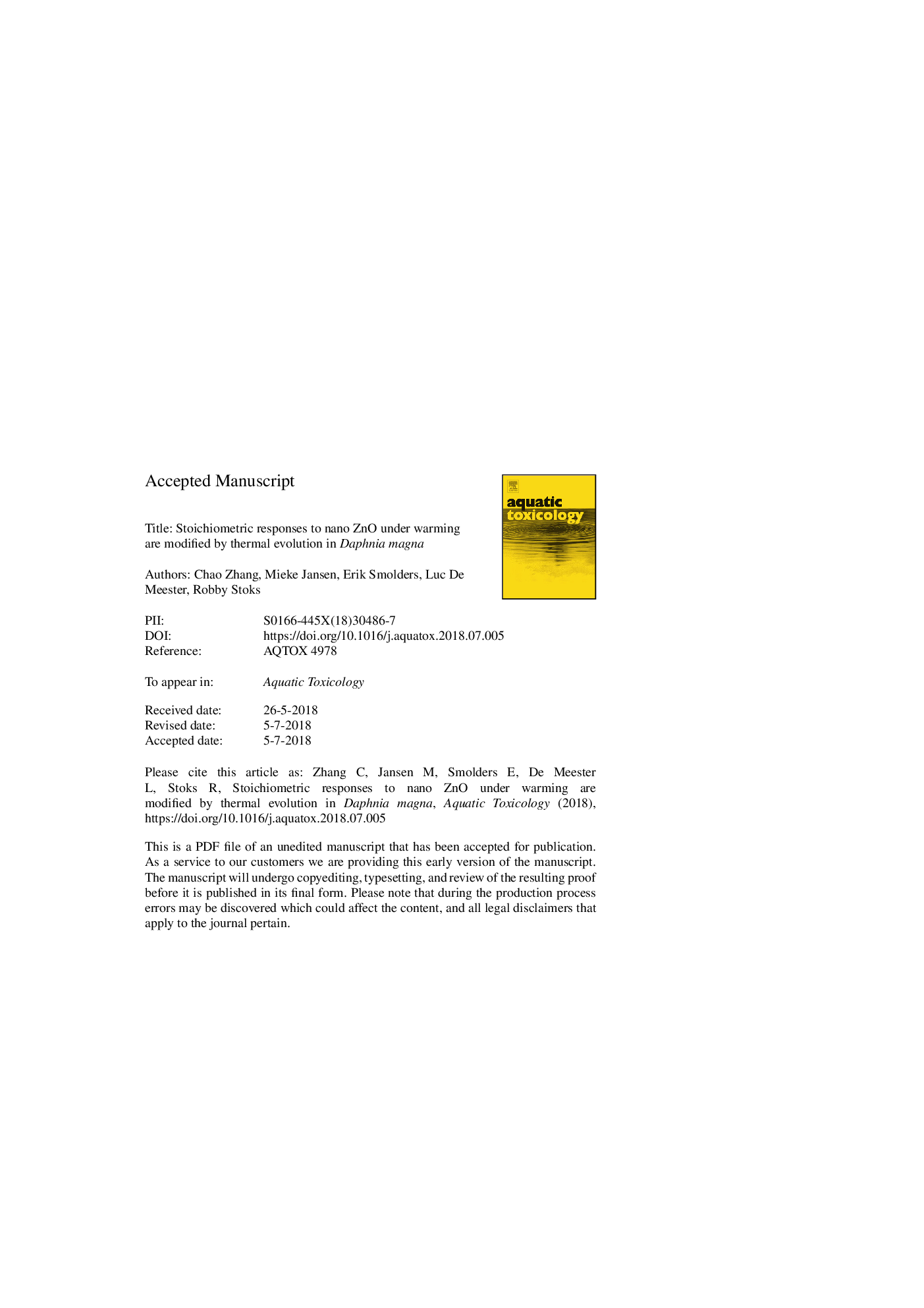| Article ID | Journal | Published Year | Pages | File Type |
|---|---|---|---|---|
| 8883644 | Aquatic Toxicology | 2018 | 26 Pages |
Abstract
Effects of stressors on body stoichiometry are important as these may cascade through food webs. Contamination and global warming are two key anthropogenic stressors, yet their effects on body stoichiometry have been rarely tested. Further, while thermal evolution may increase the ability to deal with warming, it is unknown how thermal evolution modifies the effect of contaminants under warming. Using resurrection ecology, we studied two Daphnia magna subpopulations (old/recent) of which the recent subpopulation evolved a higher heat tolerance. We exposed both subpopulations to a sublethal concentration of nano zinc oxide (nZnO) and 4â¯Â°C warming and quantified their effects on body stoichiometry: carbon (C), nitrogen (N), phosphorus (P) contents and their ratios (C:N, C:P, N:P). In the old subpopulation, nZnO only marginally decreased the C content and had no effect on N and P contents and their ratios. In contrast, in the recent subpopulation nZnO strongly increased the body P content (+51%) and reduced the C:P (â34%) and N:P (â34%) ratios at 24â¯Â°C but not at 20â¯Â°C. Moreover, these stoichiometric changes were not explained by changes of corresponding macromolecules as assumed by theory. Our results indicate that the stoichiometric responses to nZnO in Daphnia are temperature-dependent and modified by rapid evolution. The observed changes in body stoichiometry may affect the food quality of this important prey and have the potential to cascade through food webs and shape nutrients cycling.
Keywords
Related Topics
Life Sciences
Agricultural and Biological Sciences
Aquatic Science
Authors
Chao Zhang, Mieke Jansen, Erik Smolders, Luc De Meester, Robby Stoks,
